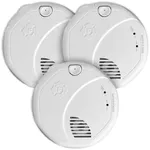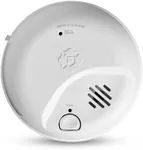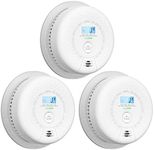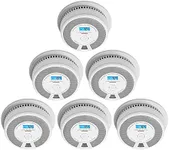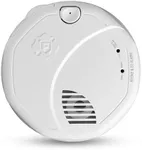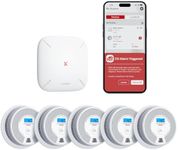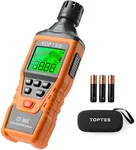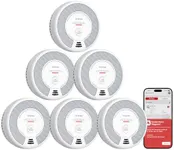Buying Guide for the Best Smoke And Co Alarm
Choosing the right smoke and carbon monoxide (CO) alarm is crucial for ensuring the safety of your home and family. These devices are designed to detect the presence of smoke and CO, which can be life-threatening if not detected early. When selecting a smoke and CO alarm, it's important to consider several key specifications to ensure you get the best fit for your needs. Understanding these specifications will help you make an informed decision and provide peace of mind knowing that your home is protected.Type of SensorThe type of sensor in a smoke and CO alarm determines what kind of threats it can detect. Smoke alarms typically use ionization or photoelectric sensors, while CO alarms use electrochemical sensors. Ionization sensors are better at detecting fast-flaming fires, while photoelectric sensors are more responsive to smoldering fires. Some alarms combine both types for comprehensive coverage. For CO detection, electrochemical sensors are the most reliable. Consider your home environment and potential fire risks when choosing the sensor type.
Power SourceSmoke and CO alarms can be powered by batteries, hardwired into your home's electrical system, or a combination of both. Battery-powered alarms are easy to install and can be placed anywhere, but they require regular battery replacement. Hardwired alarms are more reliable as they are connected to your home's power supply, often with a battery backup in case of power outages. Combination alarms offer the best of both worlds. Choose a power source that fits your installation preferences and maintenance capabilities.
InterconnectivityInterconnectivity refers to the ability of multiple alarms to communicate with each other. When one alarm detects smoke or CO, all interconnected alarms will sound, providing a more comprehensive alert system. This feature is especially useful in larger homes or multi-story buildings. Some alarms offer wireless interconnectivity, making installation easier without the need for additional wiring. Consider interconnectivity if you want to ensure that an alarm in one part of your home can alert the entire household.
Smart FeaturesSmart smoke and CO alarms can connect to your home Wi-Fi network and provide additional features such as remote notifications, integration with smart home systems, and self-testing capabilities. These alarms can send alerts to your smartphone if smoke or CO is detected, even when you're not at home. They can also be integrated with other smart devices for enhanced safety and convenience. If you value remote monitoring and advanced features, a smart alarm might be the right choice for you.
Lifespan and MaintenanceThe lifespan of a smoke and CO alarm is an important factor to consider. Most alarms have a lifespan of 7-10 years, after which they need to be replaced. Some alarms come with end-of-life indicators that alert you when it's time for a replacement. Regular maintenance, such as testing the alarm and replacing batteries, is crucial for ensuring its effectiveness. Choose an alarm with a clear lifespan indication and easy maintenance requirements to ensure long-term reliability.
Certifications and StandardsCertifications and standards ensure that the smoke and CO alarm meets safety and performance requirements. Look for alarms that are certified by recognized organizations such as UL (Underwriters Laboratories) or ETL (Intertek). These certifications indicate that the alarm has been tested and meets specific safety standards. Choosing a certified alarm provides assurance that the device will perform reliably in detecting smoke and CO.
